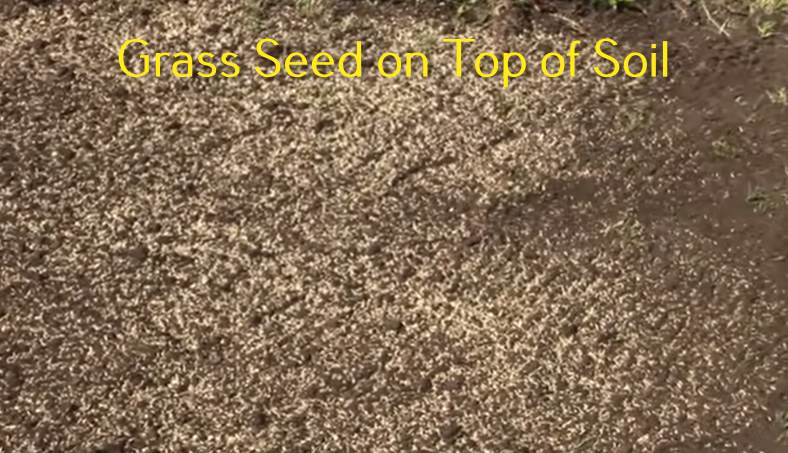It’s quite challenging when growing grass from seed; you may not be sure whether to cover the seeded lawn or just leave them scattered on the surface of the soil. This guide has all answers to that. So, will grass seed germinate on top of the soil?
Yes, grass seed can germinate on top of soil. However, covering them with a fine layer of topsoil, compost or mulch is usually beneficial. It helps to keep the soil moist, reduce seed movement, stop the birds from feeding on grass seed and encourage development of roots.
Will Grass Seed Germinate on Top of Soil?
It’s not ideal to simply spread grass seed on top of the soil and leave it germinating. Yes, some of the seeds may germinate and grow without further steps, but you will end up with poor and uneven germination. Grass seed are vulnerable to different elements if not covered.
Germination of grass seed takes 3 to 4 weeks. During this period, they require favourable soil conditions to germinate. The germination process requires air, optimum temperature and an appropriate amount of moisture. These conditions are effectively achieved when the seeded lawn area is covered.
When grass seed is not covered, the newly germinated seedlings struggle to properly root. It may also predispose the seedling to harsh environmental conditions. When the roots are too shallow into the ground, they prevent the grass from obtaining water and nutrients that are below the surface.
Exposing grass seed on top of soil creates an easy food source for birds. Different birds like sparrows, finches, starlings and blackbirds eat grass seed as part of their diet. Covering them with mulch or soil can help to hide the seed from hungry birds.
Leaving seeded lawn uncovered also increases the chances of seed being carried away by wind or surface runoff from a heavy downpour. Remember that it takes up to 4 weeks for grass seed to germinate. Therefore, you need to keep them in one place until they germinate.
Also Read: Can you put straw over grass seed?

Why should you Cover Grass Seed?
Covering your seeded lawn with fine soil, compost or mulch is essential. It helps to promote even and proper germination. Other benefits of covering grass seed include:
1. Healthy development of roots
A seeded lawn covered with soil, compost or mulch is likely to develop healthier roots compared to when scattered on the surface of the soil. Grass requires a deep web-like rooting system to develop and grow healthy. The plant can also get the necessary water and nutrients that are deeper into the soil.
2. Even seed germination
When you place seed on the ground without covering, it simply means that it will only receive moisture from one side while the other will dry out in the sun. Grass seed require moisture, warmth and air on both sides to germinate evenly.
3. Deterring Birds from Pecking on the Seed
Birds like finches, sparrows and starlings eat grass seeds as part of their diet. These birds will feed on the seed if they get uncovered on the ground. Covering seeded lawns with compost, mulch, or soil will help to deter birds from pecking on the seed.
4. Reduced Seed Movement
Grass seed are tiny particles that are easily carried away by wind or runoff from rainfall or watering. The movement is greatly reduced if they are properly secured with a layer of soil or mulch. Therefore, it helps to promote even germination.
5. Protection from the Sun
Covering a seeded lawn help to protect the seed from the scorching effect of the sun. Grass seedlings are quite delicate and can easily dry out when exposed to high temperatures from the sun.
6. Conservation of soil Moisture Content
Covering grass seed with straw mulch helps lock water in the soil by reducing evaporation. It greatly reduces the frequency of watering. You’re only required to check the soil moisture content and water when the soil feels dry.
Final Thoughts
Now that you know it is essential to cover a seeded lawn with a layer of topsoil, compost or mulch. Next time you sow your grass seeds, be sure to cover them to promote even germination, healthy root development, conserve soil moisture content, prevent seed movement as well as from being eaten by birds.